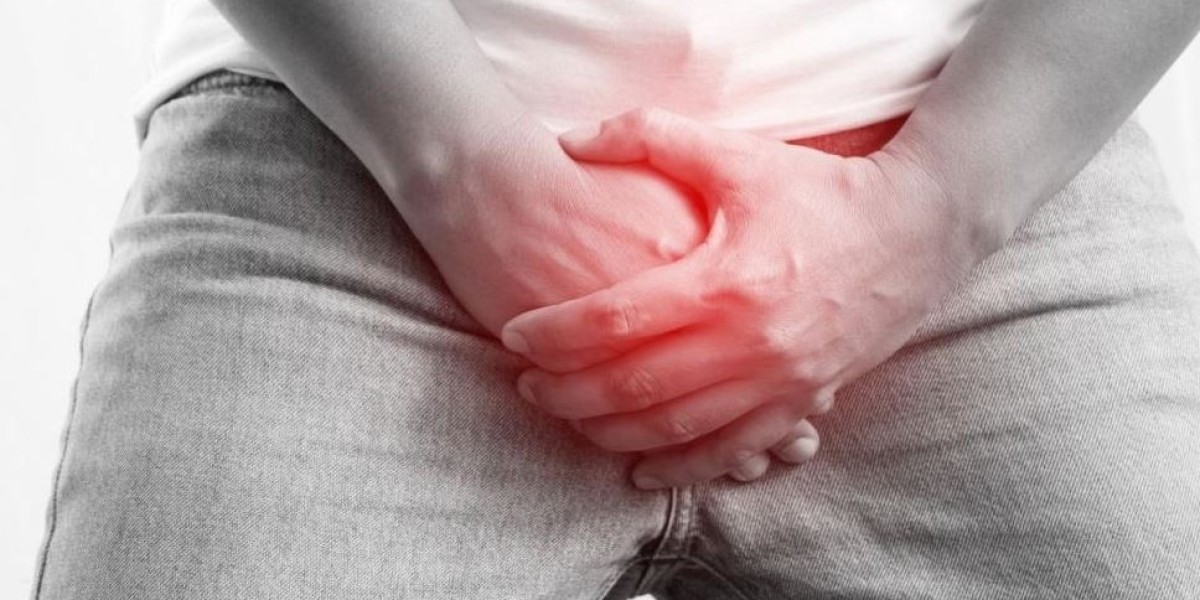A varicocele is a condition in which the veins inside the scrotum—the sac that holds the testicles—become enlarged and twisted due to poor blood flow. These veins are part of the pampiniform plexus, a network responsible for draining blood from the testicles back toward the heart. When these veins dilate, it causes increased pressure and heat within the scrotum, potentially leading to pain, testicular shrinkage, and infertility.
Varicocele is one of the most common causes of male infertility, affecting approximately 15% of all men and up to 40% of men with infertility problems. Despite being common, it’s often underdiagnosed or ignored because early symptoms can be subtle. Fortunately, with modern medical and surgical treatments, varicocele can be effectively managed or completely cured.
This comprehensive article explores everything about varicocele—from causes and symptoms to the most advanced treatment options and recovery process.
Understanding Varicocele
A varicocele is similar to varicose veins that develop in the legs. In both conditions, the veins’ valves—responsible for ensuring one-way blood flow—fail to function properly. As a result, blood pools and causes vein dilation.
The pampiniform plexus helps maintain the ideal temperature for sperm production by cooling the arterial blood before it reaches the testicles. When varicocele develops, this cooling system is disrupted, causing increased testicular temperature, which can harm sperm production and function.
Anatomy and Mechanism Behind Varicocele Formation
To understand varicocele formation, it’s essential to look at the anatomy of the male reproductive system:
The testicular veins drain blood from each testicle upward toward the abdomen.
The left testicular vein drains into the left renal vein at a perpendicular angle, whereas the right testicular vein drains directly into the inferior vena cava.
This structural difference causes higher venous pressure on the left side, which is why 90% of varicoceles occur on the left, though bilateral varicoceles can also occur.
When venous valves fail to close properly, blood refluxes downward, leading to increased pressure and dilation of the veins surrounding the testicle. Over time, this causes stagnant blood flow, increased temperature, and oxidative stress, all of which can impair sperm production.
Causes and Risk Factors
While varicocele often occurs spontaneously, certain factors can increase the risk:
Defective or Weak Venous Valves:
The primary cause of varicocele is the malfunction of valves in the testicular veins, which leads to backward flow of blood.Anatomical Variations:
The left testicular vein’s unique drainage path makes it more vulnerable to increased pressure and dilation.Increased Intra-Abdominal Pressure:
Chronic constipation, heavy weightlifting, or prolonged standing can elevate abdominal pressure, contributing to varicocele formation.Genetic Predisposition:
Family history of varicose veins, hernias, or vascular weaknesses may make an individual more susceptible.Hormonal and Vascular Disorders:
Imbalances that affect vein elasticity and blood flow regulation can also play a role.
Symptoms of Varicocele
Many men with varicocele are asymptomatic, meaning they may not feel any discomfort or notice physical changes until infertility or scrotal pain becomes apparent. However, when symptoms do occur, they typically include:
Dull or aching scrotal pain: Often described as heaviness or dragging sensation, especially after standing or exercise.
Visible or palpable enlarged veins: The scrotal veins may appear as a soft mass resembling a “bag of worms.”
Swelling or lump in the scrotum: Usually more pronounced on the left side.
Testicular shrinkage (atrophy): The affected testicle may become smaller due to reduced blood flow.
Reduced fertility or low sperm count: Often the first sign leading to diagnosis during fertility evaluations.
Worsening pain during the day: Especially in hot weather or after physical activity, improving when lying down.
Varicocele and Male Infertility
Varicocele is a major contributor to male infertility, and its effects on sperm production are well-documented. The mechanisms include:
Increased Scrotal Temperature:
Normal sperm production requires a temperature slightly below body temperature. Varicocele raises scrotal temperature, impairing spermatogenesis.Oxidative Stress and Free Radical Damage:
Pooling blood increases reactive oxygen species (ROS), damaging sperm DNA and reducing motility.Reduced Oxygen Supply:
Poor circulation deprives testicular tissue of oxygen, impairing hormone production and sperm health.Hormonal Imbalance:
Varicocele can alter the function of Leydig cells (testosterone-producing cells), resulting in lower testosterone levels.Testicular Atrophy:
Persistent pressure damages testicular tissue, reducing volume and function.
Studies have shown that varicocele repair can significantly improve sperm count, motility, and morphology—leading to higher chances of natural conception or success with assisted reproductive techniques like IVF or ICSI.
Diagnosis of Varicocele
Accurate diagnosis is crucial for determining treatment strategy. Diagnosis usually involves the following steps:
1. Physical Examination
A urologist examines the scrotum while the patient is standing. The doctor may ask the patient to perform a Valsalva maneuver (bearing down) to make the varicocele more prominent.
Varicoceles are graded as:
Grade I: Small; palpable only during Valsalva maneuver.
Grade II: Moderate; palpable without Valsalva but not visible.
Grade III: Large; easily visible through scrotal skin.
2. Scrotal Ultrasound (Color Doppler)
This is the gold standard for confirming varicocele diagnosis.
It measures vein diameter and assesses reverse blood flow (reflux). A vein diameter exceeding 3 mm with reflux during Valsalva confirms the diagnosis.
3. Semen Analysis
For men seeking fertility evaluation, semen testing helps measure sperm count, motility, and morphology. Abnormal results support the need for varicocele correction.
4. Hormonal Evaluation
In cases of suspected hormonal imbalance, blood tests for testosterone, FSH, and LH may be performed.
When Should Varicocele Be Treated?
Not all varicoceles require intervention. Small, asymptomatic varicoceles often do not affect fertility or testicular function. However, treatment becomes necessary in the following situations:
Persistent or chronic scrotal pain not relieved by conservative methods.
Testicular atrophy or noticeable size difference between testicles.
Infertility or abnormal semen parameters.
Low testosterone or hormonal imbalance linked to varicocele.
Aesthetic or psychological discomfort due to visible scrotal swelling.
Treatment Options for Varicocele
1. Conservative (Non-Surgical) Management
For mild cases or those with minimal symptoms, conservative management may be advised initially.
Pain Relievers:
Over-the-counter analgesics like ibuprofen can alleviate discomfort.Scrotal Support:
Wearing supportive underwear (e.g., jockstrap) reduces vein pressure and pain.Lifestyle Changes:
Avoid prolonged standing, excessive weightlifting, and manage constipation.Observation and Follow-up:
Regular monitoring through ultrasound and semen tests to track progression.
Conservative management does not cure varicocele but can temporarily manage symptoms.
2. Surgical and Interventional Treatments
When conservative measures fail or fertility is compromised, surgical correction (varicocelectomy) is the most effective treatment. The goal is to block the refluxing veins while preserving arteries and lymphatic vessels to restore normal blood flow.
Below are the main treatment techniques:
A. Microsurgical Varicocelectomy (Gold Standard)
This technique is widely regarded as the most effective and safest treatment for varicocele.
Procedure:
A small incision (about 2–3 cm) is made in the groin area. Using a high-powered surgical microscope, the surgeon identifies and ligates the dilated veins while preserving arteries and lymphatic channels.Advantages:
Highest success rate (over 95%).
Lowest recurrence rate (<1–2%).
Minimal risk of hydrocele formation.
Faster recovery with smaller incision.
Recovery:
Most patients resume normal activity within 1–2 weeks.
B. Laparoscopic Varicocelectomy
This minimally invasive surgery uses a laparoscope inserted through small abdominal incisions.
Procedure:
The surgeon ties off the affected veins using clips or sutures under camera guidance.Advantages:
Best for bilateral (both-sided) varicoceles.
Shorter hospital stay.
Quick recovery.
Disadvantages:
Requires general anesthesia.
Slightly higher recurrence risk than microsurgery.
C. Percutaneous Embolization (Non-Surgical Method)
Performed by an interventional radiologist, this is a non-surgical, outpatient procedure.
Procedure:
A thin catheter is inserted into a large vein (usually in the groin or neck). The radiologist guides it to the testicular vein using X-ray imaging and injects tiny coils or a sclerosing agent to block the faulty veins.Advantages:
No incision or stitches.
Local anesthesia only.
Short recovery time (1–2 days).
Disadvantages:
Requires specialized radiological expertise.
Slightly higher recurrence rate than microsurgery.
Not suitable for all anatomical variations.
D. Open Surgical Ligation (Palomo or Ivanissevich Technique)
This traditional method involves tying off the affected veins through a small incision in the groin or abdomen.
Advantages:
Effective in many cases.
Can be done under local or general anesthesia.
Disadvantages:
Higher recurrence and hydrocele formation compared to microsurgery.
Longer recovery time.
Post-Treatment Recovery and Care
Recovery depends on the procedure but generally follows these guidelines:
Rest for 48–72 hours.
Avoid strenuous activity for at least one week.Pain management with prescribed analgesics.
Ice packs for swelling reduction.
Avoid sexual activity for 1–2 weeks post-surgery.
Resume normal exercise after 2–3 weeks.
Follow-up visits for physical examination and semen analysis after 3–6 months to assess improvement.
Most patients experience significant pain relief and improved fertility within a few months after treatment.
Success Rates and Fertility Outcomes
Varicocelectomy significantly improves reproductive potential:
Semen quality improvement: Seen in 60–80% of patients.
Natural pregnancy rates: Range from 40–60% within one year.
Hormone restoration: Testosterone levels often improve.
Recurrence rate: Less than 2% with microsurgery.
Even for couples undergoing assisted reproduction, treating varicocele improves sperm DNA integrity, increasing IVF and ICSI success rates.
Possible Complications
While varicocele treatments are safe, some complications may rarely occur:
Hydrocele (fluid accumulation) around testicles.
Recurrence or persistence of varicocele.
Infection or bleeding at incision site.
Testicular artery injury (very rare, minimized with microsurgical techniques).
Temporary scrotal swelling or numbness.
Prompt medical attention ensures quick resolution if any of these arise.
Preventive Measures and Lifestyle Tips
Although varicocele itself isn’t always preventable, certain habits can support better venous health:
Maintain a healthy weight to reduce venous pressure.
Avoid prolonged standing or heavy lifting.
Treat chronic constipation promptly.
Wear supportive undergarments during physical activities.
Maintain a balanced diet rich in antioxidants to combat oxidative stress.
Schedule regular testicular self-exams and urologist visits if you notice swelling, pain, or asymmetry.
Long-Term Outlook
The prognosis after varicocele treatment is excellent. Most men experience significant improvements in testicular comfort, sperm production, and hormone balance. Early detection and timely treatment can prevent irreversible damage to testicular tissue and maximize fertility outcomes.
Conclusion
Varicocele is a common yet highly treatable condition that can impact testicular function and fertility. Understanding its symptoms, causes, and treatment options empowers men to seek timely medical help.
With advancements like microsurgical varicocelectomy and percutaneous embolization, varicocele repair today is safe, minimally invasive, and highly effective. If you experience scrotal discomfort, visible swelling, or infertility issues, consulting an experienced urologist or andrologist can make a life-changing difference.
Timely intervention not only restores reproductive health but also improves overall confidence and well-being—offering men a renewed chance at natural conception and optimal testicular function.







